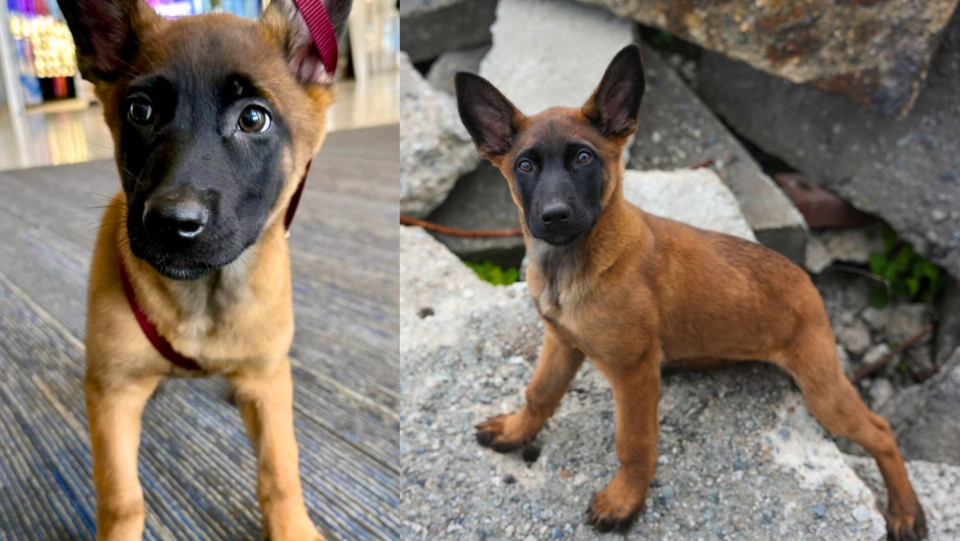At just three months old, Coco already has a career picked out.
The Belgian Malinois puppy has begun training to become a live find disaster search canine, a specialized job for dogs who find people alive in rubble after a disaster, like an earthquake, flood, or emergency, like a rooftop collapse.
Canada Task Force 1: Joining the team
Once training is done and she passes her tests, Coco will join the Heavy Urban Search and Rescue team (HUSAR) team based in Vancouver; it's one of five across the country and dubbed Canada Task Force 1. That makes Coco the current Canada Task Force 1 puppy.
"Coco is the most recent hire for our canine team," says Bob Sandher, the task force's canine team lead. "It's a lot to do with genetics and breed and capability; we have Coco's sister from a different litter, Millie. She validated at a super young age."
That natural talent seems to run in the family; Coco has another sister working in Manitoba. The Vancouver team, which has nine dogs, is mostly made up of Belgian Malinois, with a couple of German Shepherds and a German shorthair pointer.
The specialized team includes human members, too, who come from a variety of branches under the city government, including police (where Sandher works), firefighters, local medics, and other city staff who work in emergency services.
The local HUSAR team is the only one in the province certified to work in disaster zones.
Not just natural ability
While every dog can smell things better than humans, becoming a live find disaster search canine requires more than a good nose. Agility, confidence and endurance are all essential, Sandher says.
Coco's training right now is focusing on hide-and-seek and learning when to bark; in the future, they'll combine those concepts to teach her to bark when she finds things. She's rewarded with a toy for doing a good job.
Along with learning how to find people and alert her team to the discovery, a big part of the pup's training will have to do with environmental conditions.
"It takes a unique kind of dog," says Sandher. "It comes to their environment and if they're capable of overcoming this drastic kind of fear."
That's because the conditions Coco will be trained to deal with are very dramatic; while other search and rescue dogs work in forests or the city streets, Coco and her teammates have to deal with conditions a dog, and, really, any animal, would avoid.
Sandher lists off some of the conditions Coco may face in the future: "She has to learn off-leash obedience, agility, going up ladders, crawling, going on slick surfaces."
When fully trained, Coco has to be willing and able to search uncertain environments, like collapsed buildings, with confidence and the trust of her team. They'll be the ones who have to mount a rescue mission based on her barks.
"It's hardest searching on a rubble pile where everything is unstable," says Sandher. "We do a lot of environmental exposure."
Coco will be in training for quite a while; depending on how things go, she could get tested and validated in a year or so. Then she'll be deployable, says Sandher, but the dogs on the team keep on training throughout their careers.
"Last week she got to watch a couple of dogs in action; she was already barking up a storm," he notes.



